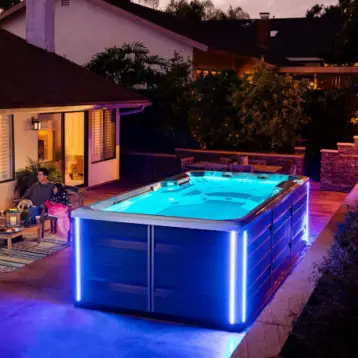
You don’t need a lot of money to start a business. All you need is the right idea. Look at your talents and your available resources, and get started.
Garage Days Revisited
All the really cool businesses start in garages. Or in dorm rooms. Here are a few multi-billion dollar businesses that began that way:
- 1901 Harley Davidson: William S. Harley designed plans for a powered bicycle with a small engine with his friend Arthur Davidson, building them originally in a small wood shed in Milwaukee, Wisconsin.
- 1923 Disney: Walt Disney, his brother Roy, and his uncle Robert started filming Alice’s Wonderland comedies in Robert’s garage in 1923.
- 1969 Yankee Candles: At 16 years old, Michael Kittredge started making candles from melted crayons in his parent’s garage, initially just as a Mother’s Day gift for his mother.
- 1975 Microsoft: Bill Gates and Paul Allen started it in a small garage, and very few resources, licensing their first operating for about $80,000.
- 1976 Apple: Steve Jobs and Steve Wozniak started by selling 50 computers – Wozniak’s Apple I – to a local retailer. Jobs ordered the parts, and with a small team built them in 30 days.
- 1984 Dell Computers: Michael Dell started this in a University of Texas dorm room in Austin with $1000 in capital, and in two years was making the fastest personal computer on the market.
- 1994 Amazon: Founded by Jeff Bezos, it was originally just a small online bookstore, operated out of his garage in Bellevue, Washington.
- 1998 Google: Larry Page and Sergey Brin started in a California garage, rented from YouTube founder Susan Wojcicki, and then tried to sell the company to Excite for $1 million.
- 2004 Facebook: The most popular social networking platform worldwide was started in a Harvard dorm room on Mark Zuckerberg’s personal computer.
- 2004 WordPress: Matt Mullenweg and Mike Little started the company while students at the University of Houston, which has since changed not only blogging but website creation.
The point here is you don’t have to have much experience or money. Just a good idea and a bit of moxie can make your business successful.
Some Ideas
Finding a niche that fits your skills is almost always the best place to start. Try something that you’re good at, or at which you have some experience. Many businesses require licensing too, so look into those costs before getting started.
A business that provides services requires the least amount of startup capital:
- Advertising Consultant
- Freelance Writer
- Small Business Consultant
- Videographer
- Virtual Assistant
- Web Developer
- Website designer
Or you may wish to try these businesses, which require a bit more capital:
- Dog grooming
- Low-investment (under $2000) manufacturing businesses
- Pet Boarding
- Pool-cleaning
- Pressure-washing
- Social media marketing
Making a Plan
Even if you’re just looking to build something to supplement your income, it’s still good to come up with a plan for your business. Think about a few basic things you need.
These days you’ll need a computer for keeping track of expenses, customer invoices, inventory, answering online queries, and probably a few other things. Laptops are best if you need to work remotely. And if you’re doing any kind of freelancing, with a laptop all you need is an Internet connection. If you’re going to do something that requires more speed and memory, such as web development or graphic design, however, investing in a new laptop or desktop – probably for well under $2000 – can mean the difference between success and failure.
Having an online domain and creating a website is a must. It’s also pretty inexpensive. For less than $50 you can buy a domain online, and it’s relatively easy these days to create a professional-looking website yourself.
Depending on your business, utilizing marketing tools like SEO, e-mail marketing, and social media will help grow traffic once you’re live. And once you’re up and running, it’s a good idea to start blogging right away to help establish your expertise and boost search engine rankings.
An Internet connection is also required, regardless of your business. Make sure you’ve got WiFi and a decent cell phone plan that allows you to inexpensively access the Internet – and check your business e-mails – wherever you are. Remember, the more quickly you respond to customer requests, the better chance you’ll have at success.
How to Keep Costs Down
As a startup, you’ll want to cut costs wherever possible. Software that helps with productivity is always a good idea.
Microsoft Office is an important tool, though it costs a bit. Power Point, Outlook, Excel, and Word can do all you need as a business. And instead of investing in Microsoft products straight away, especially if funds are tight, you can make do with Microsoft’s open-source competitor, OpenOffice.
For Macs, there’s the office productivity suite, for which you can get Keynote, Numbers, and Pages free. With Google Drive, which is also free, you can create spreadsheets, documents, and more.
As many businesses start online – and with clients in other cities, states, or even countries – it’s often necessary to ensure that both you and your customer are protected legally. One simple and inexpensive solution that allows you to easily sign contracts remotely is eOriginal’s SmartSign. It allows you to make customizable e-contracts with branding that enable you to conduct business more quickly, reduce costs, and provide clients and customers an even greater sense that they’re dealing with a professional.
You can also create simple icons and logos on MS Word or Google Docs as a precursor to a professional logo to use for letterheads. It’s also really easy – and free – with both programs to convert them to PDFs.
Google Calendar can help with setting up meetings, while you can store photos and post YouTube videos through Google Photos. If you’ve got a Gmail account, you’ve already got access to them, for free.
And, if you’re operating with a printer, you can even use remanufactured ink cartridges to cut down on costs as well. Plus, it’s green!










